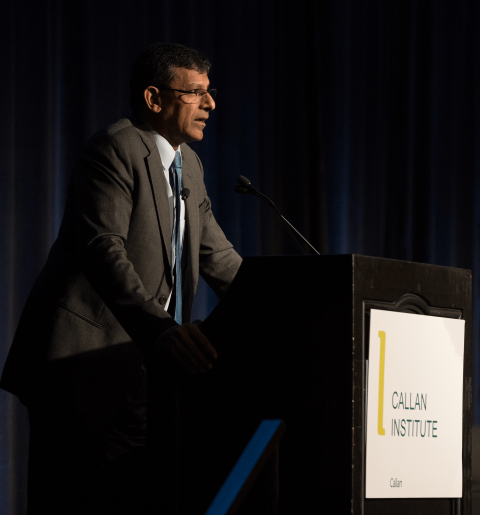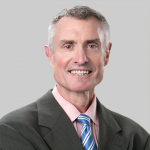Speaking at Callan’s National Conference earlier this year, economist Raghuram Rajan discussed the state of the world’s economy as it entered 2019. At that time, most countries were experiencing a slowdown in economic growth and anticipated muted gains over the coming year.
The reasons for the malaise differ from country to country. Or, as he put it, echoing Leo Tolstoy, “Happy countries are all alike. Every unhappy country is unhappy in its own way.”
Dr. Rajan, who is a professor of finance at the University of Chicago Booth School of Business and the author of The Third Pillar: How Markets and the State Leave the Community Behind (February 2019, Penguin Press), noted that there are very few happy countries today. And while the sources of unhappiness differ, they all stem from a single reason: The underpinnings of growth are fragile, even after almost 10 years of extraordinary monetary stimulus.
There are two possible explanations, he said. One, the world is experiencing “secular stagnation,” with too little demand. Alternatively, there is a competing argument about weak supply, since economies are not seeing the productivity growth they did in the last technology revolution.
What should policymakers do, he asked—and what are the risks?
What Policymakers Are Doing
The U.S. turned to fiscal stimulus, but it came at the wrong time since the economy already demonstrated strong fundamentals. Businesses also welcomed the Trump administration’s lighter regulatory enforcement; tax reform added to corporate profitability; and the promise of a big infrastructure package increased business optimism.
However, the Fed grew worried about inflation—as well as financial sector risk—and decided to steadily raise rates. But those efforts came at a time of policy uncertainty as the trade war escalated, creating apprehension among businesses. And it did not help that President Trump started laying the groundwork to blame the Fed for a slowdown.
These developments led to a sharp fall in the market over the fourth quarter of 2018. Then the Fed “blinked” in early February 2019, abandoning plans to continue raising interest rates in the near future. Ultimately, the market is betting the Fed will stay on pause.

This leads to a worry that the global economy is much weaker than policymakers thought earlier and not prepared for “normal” monetary policy. But this does not mean the end of the tightening cycle. And an easy money policy might be necessary now but may lead to longer-term vulnerabilities, such as increased financial risk-taking (e.g., the leveraged loan market).
The Fed is “stuck between a rock and a hard place,” he said. Normalize—and see demand slow. Don’t normalize—and low interest rates may prop up excessive financial risk taking.
Europe is slowing after a robust 2017, he noted. But Europe has few tools to stimulate on the monetary policy side, and little room for rate cuts. Also, it faces high levels of debt, limiting its options on the fiscal side.
China is trying to change its economic model from export-led growth to consumption-led growth. To do this it began fixing its financial sector problems. But the fast pace of reform slowed growth, so regulators are now thinking of ratcheting back their efforts.
China’s structural reforms are creating tremendous anxiety. The U.S. is getting anxious about China’s push in cutting-edge technology, both economically and militarily. The U.S. is worried both about China’s methods (i.e., theft) and China’s ambitions.
Confronting China is not likely to succeed, he said, at least without enormous costs to all sides. The better approach: partner with China to get it to respect the rules of the game.
What the Risks Are
The risks policymakers face stem from low demand across the world because of a technology revolution where we haven’t seen the gains that we have seen in past revolutions. This has led to a loss of middle-income jobs, rising inequality, and other problems that affect demand.
Other risks include aging populations; more immigration is one solution, but the world is heading in the other direction. Leverage is another risk, and it is hard to back off from it. If you reverse easy financing conditions too quickly, liquidity dries up, entities cannot refinance, and the whole thing implodes.
Another risk is that low growth and poor jobs have led to the rise of strong leaders who promise change, but they have no serious agenda. Often they embark on unorthodox actions that create a high probability of accidents.
Some Reasons for Optimism
He ended his discussion on a note of optimism. While the global economy is slowing, he said, policy reversals may lead to renewed expansion. Productivity growth could pick up as the gains of innovation take hold. And if policy uncertainty abates, investment could pick up. Finally, Africa presents another opportunity for growth, especially for developed countries that are seeing their economies slow.
Ultimately, he said, the key to solving the world’s economic challenges should not rely on short-term stimulus. Instead, policymakers need to address and repair the underlying structures of their economies.

